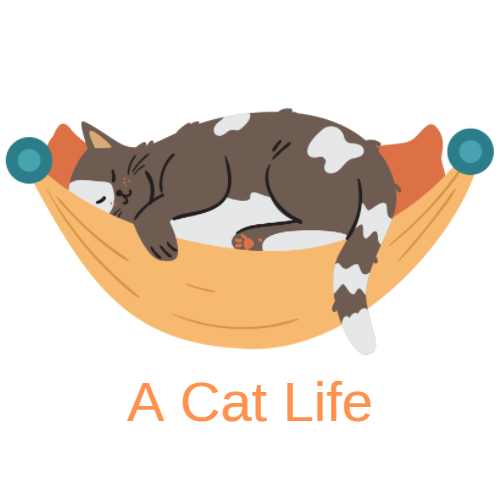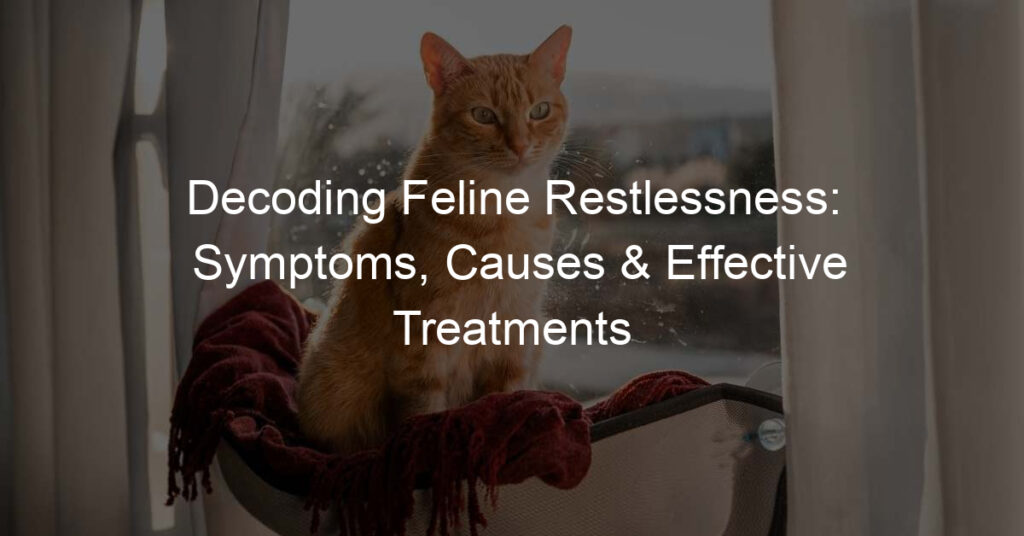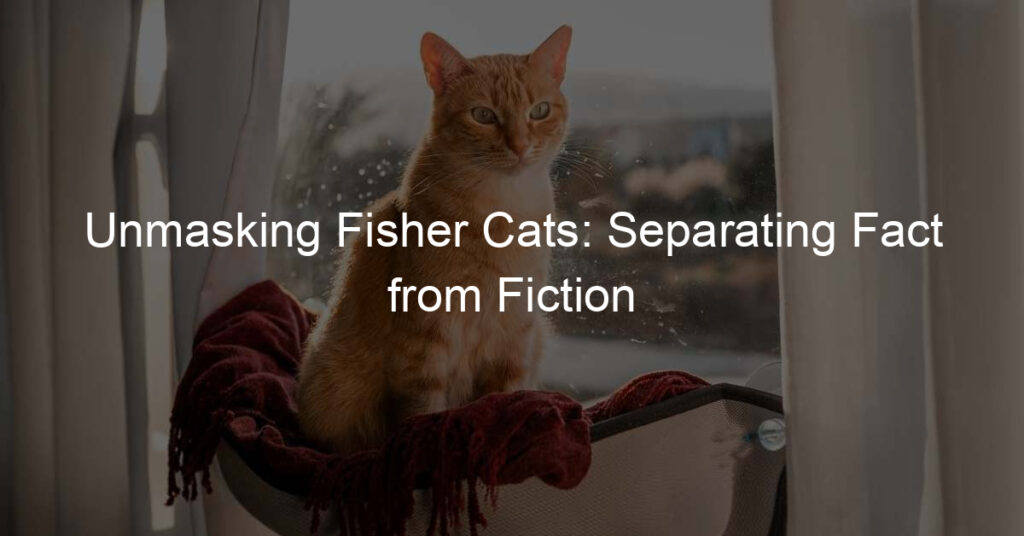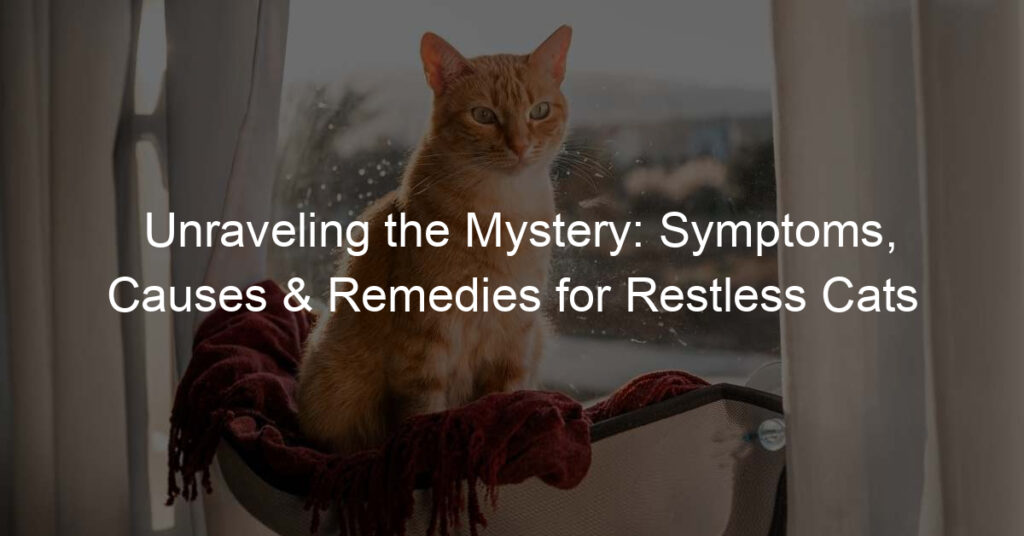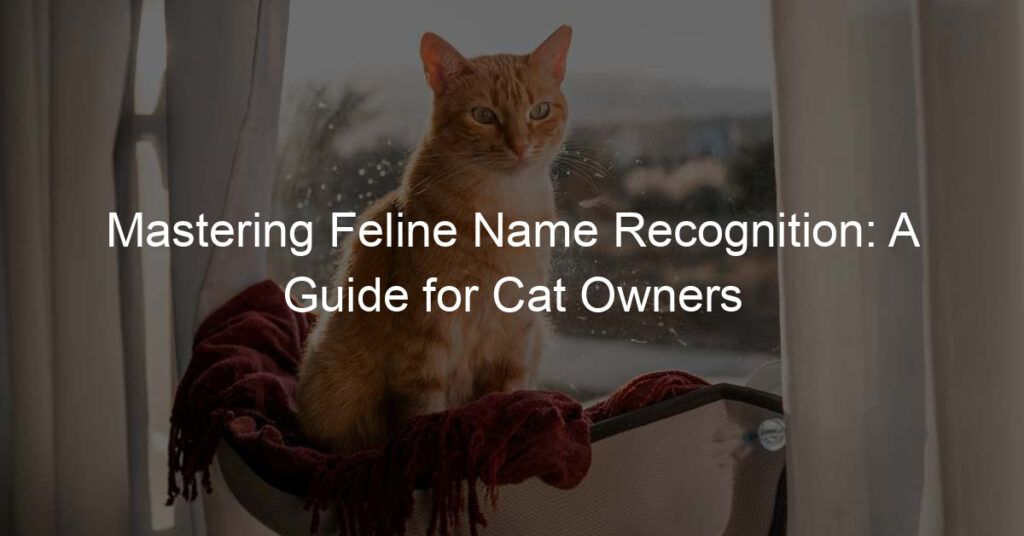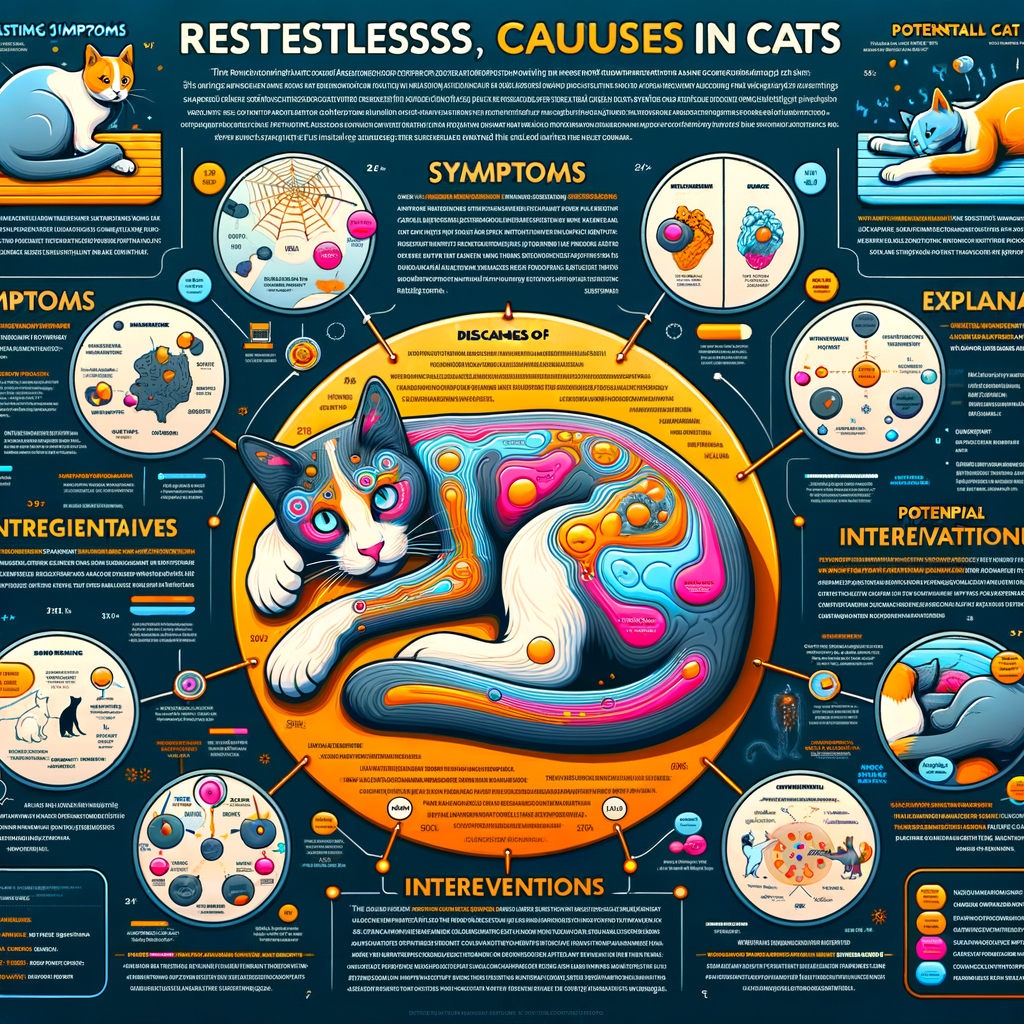
Introduction to Feline Restlessness
Have you ever noticed your cat pacing around the house, unable to settle down? This could be a sign of feline restlessness. In this blog post, we will delve into the world of restless cats, providing you with the necessary knowledge to understand and address this issue.
- Understanding Restless Cats
- Overview of Cat Behavior Problems
Restlessness in cats, also known as feline hyperesthesia, is a behavior that often leaves cat owners puzzled. It’s characterized by excessive activity, inability to settle, and sometimes even erratic behavior. Cats may run around the house, jump on furniture, or exhibit other unusual behaviors. It’s important to note that restlessness is not always a sign of a problem. Cats, especially young ones, are naturally playful and active. However, if the restlessness is excessive or causing distress to the cat, it may be a sign of an underlying issue.
Behavior problems in cats can range from simple issues like scratching furniture to more complex problems like aggression or anxiety. Restlessness is one such behavior problem. It can be caused by a variety of factors, including medical conditions, stress, or even boredom. Understanding your cat’s behavior is the first step towards addressing these problems. Remember, every cat is unique and what works for one might not work for another.
Throughout this post, we will explore the symptoms of restless cats, the possible causes, and the effective treatments available. We will also share some case studies to provide you with real-life examples of how cat restlessness can be managed. By the end of this post, you will have a comprehensive understanding of feline restlessness and how to address it.
Recognizing Restless Cats Symptoms
Understanding the symptoms of feline restlessness is crucial in helping your furry friend. Cats are known for their independent and sometimes aloof behavior, but significant changes in their usual demeanor may indicate restlessness. In this section, we will discuss the primary symptoms to look out for.
Symptoms of Restless Cats
Restlessness in cats can manifest in various ways. Here are the three main symptoms you should be aware of:
- Increased Agitation
- Excessive Grooming
- Changes in Eating Habits
One of the first signs of restlessness in cats is increased agitation. Your cat may seem more anxious than usual, pacing around the house, or showing signs of nervousness. They may also be more vocal, meowing more frequently or at unusual times.
Cats are known for their grooming habits, but excessive grooming can be a sign of restlessness. If your cat is grooming to the point of causing bald spots or skin irritation, it may be due to restlessness. This behavior is often a way for cats to soothe themselves when they are feeling anxious or stressed.
Changes in your cat’s eating habits can also indicate restlessness. This could mean eating more or less than usual, or showing a sudden lack of interest in food they usually enjoy. It’s important to monitor your cat’s eating habits closely, as changes can also be a sign of other health issues.
Recognizing these symptoms early can help you take the necessary steps to address your cat’s restlessness. Remember, these signs may also indicate other health issues, so it’s always best to consult with a vet if you notice any significant changes in your cat’s behavior or physical condition.
Understanding the Causes of Restless Cats
When it comes to understanding why our feline friends may be restless, it’s important to consider both physical and environmental factors. In this section, we will delve into the physical reasons that could be causing your cat’s restlessness.
Physical Reasons for Cat Restlessness
Just like humans, cats can experience physical discomfort that leads to restlessness. This can be due to a variety of reasons, ranging from health issues to age-related changes. Let’s explore these factors in more detail.
- Health Issues
- Age-Related Changes
Cats are good at hiding their discomfort, but certain health issues can make them restless. For instance, a cat suffering from arthritis may find it difficult to find a comfortable position to rest, leading to restlessness. Other health issues like dental problems, skin allergies, or internal diseases can also cause restlessness. It’s crucial to regularly monitor your cat’s behavior and consult a vet if you notice any unusual signs.
As cats age, they undergo various physical changes that can lead to restlessness. Senior cats may experience cognitive dysfunction syndrome, similar to Alzheimer’s in humans, which can cause confusion and restlessness. Changes in their metabolism can also disrupt their sleep patterns, making them more active at night. Regular vet check-ups can help manage these age-related changes and ensure your cat’s comfort.
In conclusion, understanding the physical reasons behind your cat’s restlessness is the first step towards ensuring their well-being. In the next section, we will explore the environmental factors that can contribute to feline restlessness.
Environmental Reasons for Cat Restlessness
Just like humans, cats can also be affected by their environment. Changes in their surroundings or a lack of stimulation can lead to restlessness. Let’s explore these factors in detail.
- Changes in the Home
- Lack of Stimulation
Cats are creatures of habit and they thrive on routine. Any changes in their home environment can cause them to become restless. This could be something as simple as moving furniture around or as significant as bringing a new pet or baby into the home. For instance, a study conducted by the American Veterinary Medical Association found that 30% of cats exhibited signs of stress when their living environment was altered.
Cats need mental and physical stimulation to stay happy and healthy. If they don’t get enough playtime or if their environment is not engaging, they can become restless. According to the Journal of Feline Medicine and Surgery, cats that lack stimulation often show signs of restlessness, such as pacing, excessive grooming, and meowing. It’s important to provide your cat with toys, scratching posts, and interactive play to keep them stimulated.
In conclusion, understanding your cat’s environment and ensuring they have enough stimulation can help prevent restlessness. Remember, a happy cat is a calm cat.
Effective Restless Cats Treatments
When it comes to treating feline restlessness, there are several effective methods. In this section, we will focus on the medical approaches. These methods should always be considered under the guidance of a professional veterinarian.
Treating Restless Cats: Medical Approaches
Medical treatments for restless cats mainly involve regular veterinary check-ups and, if necessary, medication. Let’s delve into these two aspects.
-
Veterinary Check-ups
Regular veterinary check-ups are crucial for the health of your cat. These check-ups can help identify any underlying health issues that may be causing restlessness. According to a study, about 60% of feline restlessness cases are linked to health problems. During a check-up, the vet may perform various tests such as blood tests, urine tests, and physical examinations to determine the cause of restlessness.
-
Medication
Depending on the cause of restlessness, your vet may prescribe medication. For instance, if your cat’s restlessness is due to anxiety, anti-anxiety medication may be recommended. It’s important to note that medication should only be given under the guidance of a vet. Never attempt to medicate your cat without professional advice.
In conclusion, medical approaches to treating restless cats involve regular veterinary check-ups and appropriate medication. Remember, it’s always best to consult with a professional vet before starting any treatment plan.
Treating Restless Cats: Behavioral Approaches
When it comes to treating restless cats, behavioral approaches can be just as effective as medical treatments. Let’s explore two main strategies: environmental enrichment and behavioral training.
- Environmental Enrichment
Environmental enrichment is all about making your cat’s surroundings more stimulating and engaging. This can help reduce restlessness and promote healthier behaviors. Here are some ways to enrich your cat’s environment:
- Provide plenty of toys that encourage physical activity and mental stimulation. This could include puzzle toys, interactive toys, or even simple balls and feathers.
- Ensure your cat has access to a window with a view. Cats love to watch the world go by, and this can provide hours of entertainment.
- Consider getting a cat tree or shelves that your cat can climb. This can provide a great outlet for their natural climbing instincts.
- Behavioral Training
Behavioral training involves teaching your cat to behave in certain ways or to stop unwanted behaviors. This can be a bit more challenging, but with patience and consistency, it can be very effective. Here are some tips for behavioral training:
- Use positive reinforcement. This means rewarding your cat when they behave in the way you want. This could be with treats, praise, or petting.
- Try to understand why your cat is behaving in a certain way. For example, if they are scratching furniture, it could be that they need a scratching post.
- Be patient and consistent. It can take time for cats to learn new behaviors, so don’t give up if you don’t see immediate results.
In conclusion, treating restless cats can involve a combination of medical and behavioral approaches. By enriching your cat’s environment and using behavioral training techniques, you can help your cat feel more relaxed and content.
Case Studies: Cat Restlessness Solutions
Let’s delve into real-life case studies that demonstrate effective solutions to cat restlessness. These examples will provide a practical understanding of how to address this issue in different scenarios.
-
Case Study 1: Treating a Senior Cat’s Restlessness
Meet Fluffy, a 12-year-old domestic shorthair cat. Fluffy’s owner noticed that she was becoming increasingly restless, especially at night. She would pace around the house, meow excessively, and show signs of agitation.
Fluffy’s vet conducted a thorough examination and determined that her restlessness was due to arthritis, a common ailment in older cats. The vet recommended a combination of pain management medication and a heated bed to soothe her joints. Additionally, Fluffy’s owner was advised to engage her in gentle play activities during the day to help tire her out by bedtime.
After implementing these changes, Fluffy’s restlessness significantly decreased. She was able to sleep through the night and her overall quality of life improved.
-
Case Study 2: Addressing Restlessness in a Newly Adopted Cat
Next, we have Whiskers, a 2-year-old cat who was recently adopted. Whiskers’ new family noticed that he seemed restless, frequently scratching furniture and running around the house.
The family consulted a cat behaviorist who suggested that Whiskers’ restlessness might be due to stress from the sudden change in his environment. They were advised to provide Whiskers with plenty of hiding spots and high perches, which can make cats feel more secure. The family also introduced interactive toys and regular play sessions to help Whiskers burn off energy.
With these changes, Whiskers’ restlessness decreased over time. He became more comfortable in his new home and his destructive behaviors lessened.
These case studies illustrate that understanding the root cause of a cat’s restlessness is crucial to finding an effective solution. Whether it’s due to physical discomfort or emotional stress, there are various strategies that can help alleviate your cat’s restlessness.
Key Takeaways: Decoding Feline Restlessness
Understanding feline restlessness can be a challenge. However, with careful observation and knowledge, you can help your cat lead a more comfortable life. Here are the key takeaways from our discussion on feline restlessness.
- Recognizing Symptoms of Restless Cats
- Understanding the Causes of Restless Cats
- Implementing Effective Restless Cats Treatments
Restless cats often display a range of symptoms. These can include excessive grooming, pacing, and changes in appetite or behavior. They may also become more vocal, or show signs of aggression. It’s important to monitor your cat closely and consult with a vet if you notice any unusual behavior.
There are many potential causes of restlessness in cats. These can range from medical conditions like hyperthyroidism or arthritis, to environmental factors such as changes in routine or new additions to the household. Stress and anxiety can also lead to restlessness. Understanding the root cause is crucial for effective treatment.
Treatment for feline restlessness depends on the underlying cause. For medical conditions, your vet may prescribe medication or suggest dietary changes. For environmental or behavioral causes, changes to your cat’s environment or routine may be necessary. In some cases, behavioral therapy or calming products can also be beneficial.
In conclusion, recognizing the symptoms of feline restlessness, understanding its causes, and implementing effective treatments are key to ensuring your cat’s well-being. Remember, every cat is unique and what works for one may not work for another. Always consult with a professional if you have concerns about your cat’s behavior.
Conclusion: Understanding and Addressing Feline Restlessness
As we conclude this comprehensive guide on feline restlessness, it’s crucial to remember that understanding and addressing this condition is vital for your cat’s wellbeing. Let’s recap the key points.
- The Importance of Recognizing Feline Restlessness
- Steps to Take When Dealing with a Restless Cat
Recognizing the signs of restlessness in your cat is the first step towards ensuring their health and happiness. Restlessness can be a sign of underlying health issues, such as hyperthyroidism or arthritis. It can also indicate stress or anxiety. By being observant of your cat’s behavior, you can identify restlessness early and take necessary action.
Once you’ve identified restlessness in your cat, it’s important to take appropriate steps. This can include consulting with a veterinarian, making changes to your cat’s environment, or implementing a new exercise routine. Remember, each cat is unique, and what works for one may not work for another. It’s important to be patient and persistent in finding a solution that works for your feline friend.
In conclusion, understanding and addressing feline restlessness is not only important for your cat’s physical health, but also for their mental wellbeing. By recognizing the signs and taking appropriate steps, you can help your cat lead a more comfortable and content life.
| Key Points | Details |
|---|---|
| Recognizing Feline Restlessness | Observe your cat’s behavior for signs of restlessness, such as pacing, excessive grooming, or changes in appetite. |
| Addressing Feline Restlessness | Consult with a veterinarian, make environmental changes, or implement a new exercise routine. |
